|
|
| Übersicht – Contents: | |
|
|
| Übersicht – Contents: | |
Flaggen – Flags: |
|
 |
bis/to 1818, Flagge – flag, Quelle/Source, nach/by: Die Welt im bunten Flaggenbild |
 |
1818–1911, National- und Staatsflagge (an Land) – National and state flag (ashore), Quelle/Source, nach/by: Die Welt im bunten Flaggenbild, Wikipedia (CA) |
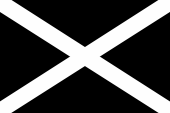 |
1818–1911, Staats- und Marineflagge (zur See) – State and naval flag (at sea), Quelle/Source, nach/by: Wikipedia (CA) |
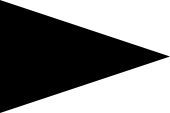 |
1818–1911, Handelsflagge – merchant flag, Quelle/Source, nach/by: Wikipedia (CA) |
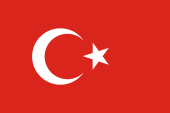 |
1883(?)–1911, mögliche einzige Flagge – possible only flag, Quelle/Source, nach/by: Wikipedia (EN) |
 |
bis/to 1911, Standarte des Sultans – Standard of the Sultan, Quelle/Source, nach/by: Die Welt im bunten Flaggenbild |
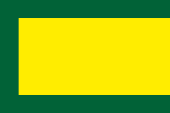 |
1722–1883(?), Standarte des Vizekönigs – Standard of the Vice King, Quelle/Source, nach/by: Wikipedia (CA) |
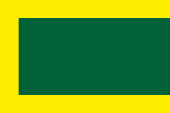 |
1722–1883(?), Standarte des Erben – Standard of the Heir, Quelle/Source, nach/by: Wikipedia (CA) |
| Das
Sultanat von Lingga war bis zur Mitte des 19. Jahrhunderts einer der
mächtigsten Malaienstaaten in der Region. Lingga unterwarf große Teile
Malayas und verbreitete seine schwarze Flagge über den ganzen Süden der
Halbinsel Malakka. Die Flaggen von Johore, Pahang und Terengganu gehen und
gingen so auf die Flagge von Lingga zurück. Als Lingga immer mehr in die
Abhängigkeit von den Niederlanden geriet, ergänzte das Land im Jahre 1818 –
nach einem Vertrag – auf seiner schwarzen Flagge eine weiße Oberecke.
Wahrscheinlich sollte so die Loyalität Linggas gegenüber den Niederlanden
demonstriert werden. Wahrscheinlich stammt vom Sultanat Lingga der Brauch, als Flagge des Sultans ein weißes Tuch zu verwenden. Das ist ungewöhnlich, da in ganz Südostasien die Farbe Gelb als die Farbe gilt, die den Herrscher repräsentiert. Die Sultanate Johore, Pahang, Terengganu, Kelantan und Perak haben diese Tradition von Lingga übernommen und so verwenden deren Sultane noch heute weiße Flaggen. |
The
Sultanate of Lingga was until the middle of the 19th century one of the
mightiest Malay States in the region. Lingga subjected large parts of Malaya
and spreaded its black flag over the whole south of the Malakka peninsula.
The flags of Johore, Pahang and Terengganu had and have their roots in the
flag of Lingga. As Lingga came more and more in the dependence of the
Netherlands the country added in the year 1818 – after a contract – on its
black flag a white upper staff quadrant. Probably should in this way been
demonstrated the loyalty of Lingga to the Netherlands. Probably descends from the Sultanate of Lingga the practice to use as flag of the Sultan a white cloth. This is unusual because in whole Southeast Asia the colour yellow counts for those colour which represents the sovereign. The Sultanates of Johore, Pahang, Terengganu, Kelantan and Perak took over this tradition from Lingga and in this way its Sultans use until today white flags. |
| Die Führung des Landes wurde seit 1722 durch eine Art Dualität wahrgenommen, einerseits der Sultan, andererseits der Vizekönig (Adat). Mit dem allmählichen Niedergang des Reiches wandelte sich das Amt des Vizekönigs mehr und mehr in das eines spirituellen und religiösen Führers. Beide Funktionen waren ab 1883 mit Abdul Rahman II. in einer Person vereinigt, der erstens stark sufistisch geprägt war und der die Idee das Land dem Osmanischen Reich als politische und religiöse Schutzmacht gegen die Niederlande und Briten zu unterstellen vorantrieb. Möglichweise geht auf ihn die zuletzt überlieferte Flagge im Design des Osmanischen Reiches zurück. Am 11.02.1911 wurde Abdul Rahman II. von den Niederländern abgesetzt. | Since 1722, the leadership of the country was exercised through a kind of duality, on the one hand the Sultan, on the other the Viceroy (Adat). With the gradual decline of the empire, the function of the viceroy changed more and more into that of a spiritual and religious leader. From 1883, both functions were united in one person namely in Abdul Rahman II, who, firstly, had a strong Sufi influence and who promoted the idea of subordinating the country to the Ottoman Empire as a political and religious protective power against the Netherlands and the British. It is possible that the last known flag in the design of the Ottoman Empire goes back to him. Abdul Rahman II was deposed by the Dutch on 11th of February in 1911. |
| Quelle: Die Welt im bunten Flaggenbild, Wikipedia (EN), Volker Preuß | |
| Das Sultanat Lingga entstand wahrscheinlich im 16./17. Jahrhundert. Es dehnte sich vom Lingga-Archipel über Singapur nach Norden über die Halbinsel Malakka aus. Lingga rückte im 18./19. Jahrhundert immer mehr in den Brennpunkt kolonialer Interessen, vor allem von Seiten Großbritanniens und der Niederlande. Die Landesteile Pahang und Johore verselbstständigen sich schließlich und geraten dann unter die Herrschaft der Briten. Der Lingga-Archipel wird von den Niederländern unterworfen und deren Kolonialreich einverleibt. Das Land war zerbrochen und geteilt. |
| The Sultanate of Lingga probably arised in the 16th/17th century. It expands from the Lingga-Archipelago over Singapore to the north over the Malakka peninsula. Lingga came in the 18th/19th century more and more in the focus of colonial interests mostly from the side of United Kingdom and the Netherlands. The parts of the country Pahang and Johore became finally independet and then under the control of the British. The Lingga-Archipelago became subjected by the Netherlanders and became incorporated in whose colonial empire. The country was broken and divided. |
| Quelle/Source: Atlas zur Geschichte, Die Welt im bunten Flaggenbild |